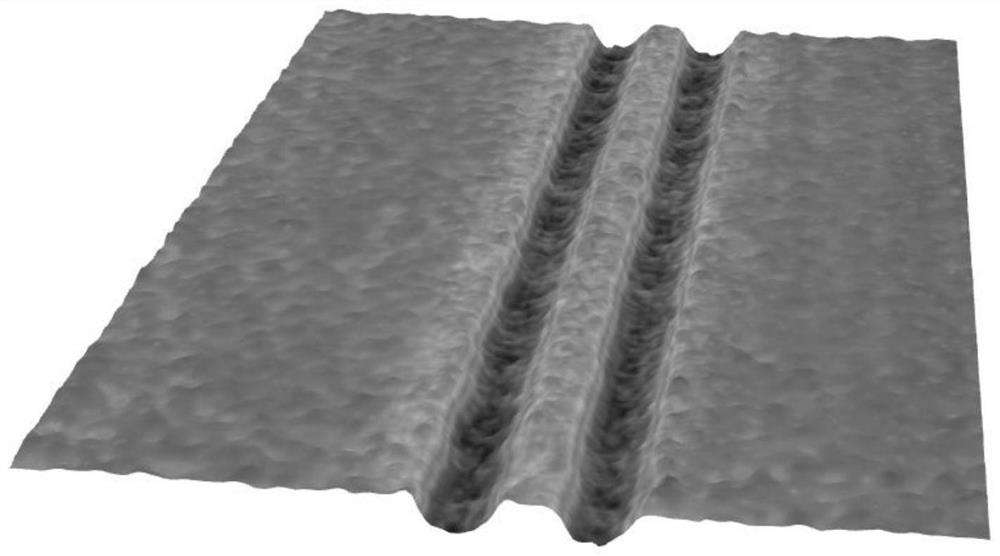Laser-induced printing method of solar cell grid lines based on double groove structure of silicon wafer
A solar cell and laser-induced technology, applied in circuits, electrical components, photovoltaic power generation, etc., can solve problems such as grid line width fluctuations, achieve stable width, reduce production costs, and save silver paste
- Summary
- Abstract
- Description
- Claims
- Application Information
AI Technical Summary
Problems solved by technology
Method used
Image
Examples
Embodiment Construction
[0036] The present invention will be further described in detail below in conjunction with specific embodiments.
[0037] The specific steps of the laser-induced printing method for solar cell grid lines based on the silicon wafer double groove structure implemented in this embodiment include:
[0038] Step 1: Laser etching the double groove structure to limit the gate line printing area: Before the texturing of the silicon wafer 2, use the laser 1 to etch the left and right two grooves 8 at the predetermined printing position of the gate line on the silicon wafer 2. A certain distance l is maintained between the grooves 8. like Figure 1-2 shown, the groove depth is s and the groove width is w. At this time, the two groove-restricted areas 9 are the predetermined grid line printing areas, and the subsequent printing of the grid lines 7 will be limited in this area.
[0039] Step 2: Preparation of silver paste film: apply the silver paste on the front side of the solar cell...
PUM
| Property | Measurement | Unit |
|---|---|---|
| depth | aaaaa | aaaaa |
| width | aaaaa | aaaaa |
| thickness | aaaaa | aaaaa |
Abstract
Description
Claims
Application Information
 Login to View More
Login to View More - R&D
- Intellectual Property
- Life Sciences
- Materials
- Tech Scout
- Unparalleled Data Quality
- Higher Quality Content
- 60% Fewer Hallucinations
Browse by: Latest US Patents, China's latest patents, Technical Efficacy Thesaurus, Application Domain, Technology Topic, Popular Technical Reports.
© 2025 PatSnap. All rights reserved.Legal|Privacy policy|Modern Slavery Act Transparency Statement|Sitemap|About US| Contact US: help@patsnap.com



